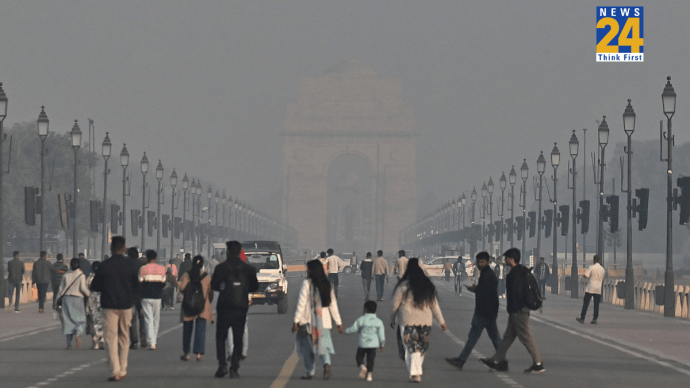Delhi, the hub of India, is a town wealthy in records, subculture and architectural marvels. From historic monuments to trendy marvels, Delhi has a plethora of attractions that captivate visitors with their class and importance. Here, we are able to explore Delhi’s seven wonders, every of which represents a specific side of the city’s rich history.
Qutub Minar
At seventy three meters tall, the Qutub Minar is certainly one of Delhi’s most recognisable structures. This UNESCO World Heritage Site was constructed inside the early 13th century through Qutb-ud-din Aibak, the founding father of the Delhi Sultanate and is a masterpiece of Indo-Islamic structure. The minaret, decorated with intricate carvings and Quranic terms, is bordered via different traditionally noteworthy monuments, including the Quwwat-ul-Islam Mosque and Delhi’s Iron Pillar, which is tremendous for its rust-resistant iron composition.
The Red Fort
The Red Fort (Lal Qila) is a fantastic fortress erected via Emperor Shah Jahan in the 17th century and it represents India’s rich Mughal legacy. Its majestic crimson sandstone partitions encompass a massive complex of palaces, gardens and pavilions that exemplify Mughal architecture. The fort’s Diwan-i-Khas (Hall of Private Audience) and Diwan-i-Aam (Hall of Public Audience) are beautiful examples of Mughal artistry, with delicate marble inlay paintings and ornamental designs.
Also Read : Want To Travel Between India, Thailand By Road? It’ll Be A Reality Soon…
Humayun’s Tomb
Commissioned via Empress Bega Begum in the 16th century, Humayun’s Tomb is a stunning mausoleum that serves as the closing resting location of Emperor Humayun, India’s second Mughal monarch. The tomb, designed through Persian architect Mirak Mirza Ghiyas, is a surprise of Mughal architecture, with a symmetrical plan, towering pishtaq (portal), and delightful gardens within the charbagh (four-quartered) fashion normal of Persian gardens. Its red sandstone exterior, embellished with elaborate marble lattice work and geometric designs, served as inspiration for the famed Taj Mahal’s construction.
Lotus Temple (a Bahá’í House of Worship)
The Lotus Temple, built with cohesion and diversity in thoughts, represents the Bahá’í faith’s values of harmony and peace. The temple’s spotless white marble petals, formed like a growing lotus flower, exude serenity and tranquility, inviting human beings of all faiths to meditate, reflect and worship. The Lotus Temple, surrounded by using lush inexperienced gardens and swimming pools, affords a tranquil break out from the hustle and bustle of city lifestyles, encouraging spiritual unification and oneness.
India Gate
India Gate is a massive gateway in the middle of Delhi that can pay homage to the braveness and sacrifice of Indian troops at some point of history. The tall building, designed by using Sir Edwin Lutyens, New Delhi’s architect, honors Indian squaddies who died in World War I and the Afghan Wars. India Gate, inscribed with the names of slain warriors, is a proud reminder of India’s robust military legacy and enduring patriotism.
Also read : ‘India Receives 6.19 Million Tourist In 2022’; Ministry Of Culture
Akshardham Temple
Known as one of the global’s largest Hindu temples, Akshardham Temple is an image of India’s religious and cultural records. The BAPS Swaminarayan Sanstha built the temple complex in 2005 and it features beautiful architectural marvels which includes intricately carved mandapas (pavilions), domes and sculptures depicting scenes from Hindu mythology and scriptures. Its centerpiece, the Akshardham Mandir, is a beautiful edifice made from red sandstone and white marble, with problematic carvings and spiritual symbols.
The Jama Masjid
The Jama Masjid, which dominates the skyline of Old Delhi, is India’s greatest mosque and an architectural masterpiece constructed through Emperor Shah Jahan in the 17th century. The mosque’s majestic exterior, manufactured from red sandstone and marble, is decorated with outstanding calligraphy, geometric designs and floral motifs that mirror the majesty of Mughal architecture. Its extensive courtyard can seat thousands of worshippers, making it a non secular and cultural center for Delhi’s Muslim network.
Finally, Delhi’s seven wonders function as eternal reminders of the metropolis’s rich history, cultural variety, and architectural prowess. From historical structures just like the Qutub Minar and Red Fort to fashionable marvels like the Lotus Temple and Akshardham Temple, each landmark gives a wonderful tale about India’s awesome records and lively present. As guardians of this wealthy beyond, it’s our commonplace obligation to maintain and protect these treasures for future generations.
Also read : WATCH: Passenger’s Spider-Man Move To Reach Train Toilet Goes Viral













